Never mind the grill grate – take that beautiful thick steak and throw it directly on our lump charcoal! Yes, on the charcoal itself. It gives a whole new meaning to direct heat. Whether you call it caveman steak, dirty steak, or Eisenhower steak…grilling steak directly on the lump charcoal gives it a fantastic charred crust and juicy interior.
Our friends at Thermoworks shared some tips so you could get the gist of the who, what, when, where, how and why of this popular steak-grilling method.
How do you go all Caveman with steaks?
Caveman steaks, also called dirty steaks, fire steaks, or even Eisenhower steaks (after the president, who liked to cook very large sirloins this way), are thick-cut steaks (1.5–2-inches thick) cooked directly on the coals of a lump charcoal fire. This is literally cooking at its most basic.
Why cooking on coals works for steaks
HOT coals
When we usually talk about searing a steak, its’ recommended heating a cast-iron pan to scorching heat. Caveman goes beyond that. Real lump charcoal has a tastier, smokier flavor than briquettes, but more importantly, it burns hotter.
How hot? Well, we pulled out an IRK-2 infrared thermometer to check the heat of the coals before we started cooking. The IRK-2 has a maximum temperature range of 1,022 degrees Fahrenheit, and it read “Hi,” indicating a temperature in excess of its maximum reading. So we pulled out an Industrial IR, with a higher maximum temperature of 1,400 degrees Fahrenheit and found the temperature of the lump coals to peak just above 1,200 degrees Fahrenheit. If you want a good sear on your steak, that temperature is going to give it to you.
Will the ash ruin the steak?
The first thing everyone asks about cooking meat directly on the coals is, “What about all the ash?” And the honest answer is, “It’s really not a problem.” Before you throw your steaks on the fire — literally — fan off any excess ash from the surface of the coals with a newspaper, palm leaf, or any piece of cardboard you have lying around. When you put the wet, oxygen-impermeable steak on the coals, the part that is touching the meat gets, in essence, extinguished, and can’t reignite. It produces no ash during the cooking. All the heat in the coals will be generated within the coal itself, not on the exterior.
Many people like to keep a natural-bristle pastry brush on hand to brush any ash off that may find its way to the meat.
Some recipes you will find for this method avoid seasoning the steak with anything but salt, but I prefer to cook caveman steak as the cavemen of ancient India may have: with lots of pepper. I think people avoid seasoning the steaks because they fear the seasonings might burn. We didn’t find this to be a problem.
Yes, some of the peppercorns burned, but that happens with any steak au poivre. And flavorful ash is literally all the rage in the fanciest of restaurants these days. If it offends your sensibilities, brush it off with that pastry brush we talked about. But it’s tasty.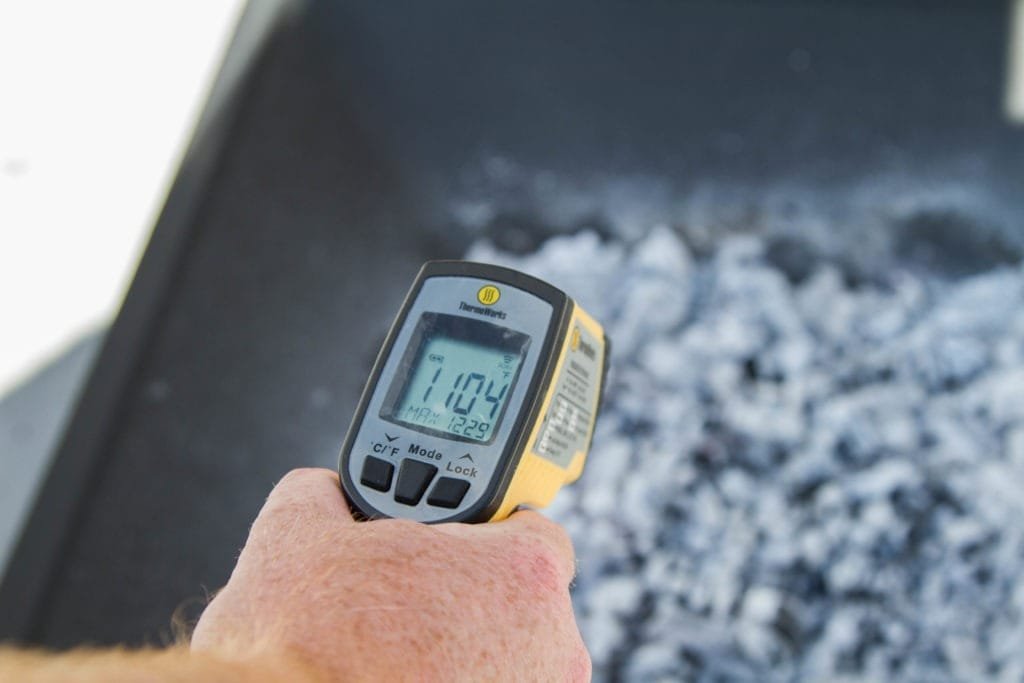
Temperature for steak cooked on coals
Carryover cooking is all about gradients. If the outside millimeters of your steak are only 10 degrees above the center, then there isn’t as much heat exchange that will happen after cooking as when the outside is 75 degrees hotter than the center. Given equal thicknesses and starting temperatures, a steak cooked in a hotter environment will experience more carryover cooking that one cooked in a cooler environment.
When the exterior of your steak is sitting in a bed of 1,200 degrees Fahrenheit coals, there is a lot of thermal energy being pumped into that exterior. The internal temperature gradients can be steep in steak cooked this way, so you’ll need to plan for a lot more carryover than you would with a steak cooked in an oven or on a grill.
Plan for up to 15 degrees Fahrenheit of carryover at the thermal center, rather than the standard 5 degrees Fahrenheit. This means for medium rare, you’ll want to pull your steak at a temperature as low as 115 degrees Fahrenheit to finish at 130 degrees Fahrenheit—or pull at 120 degrees Fahrenheit to finish at 135 degrees Fahrenheit for medium doneness. And pay attention. This cooking method is fast. It will only take 3-5 minutes per side on a thick steak.
The coals will be very hot, so the speed of the Thermapen One is very much appreciated in this situation, where keeping your hand above the coals for extended periods can be painful.
Why cook a fire steak?
Would you want to cook a steak this way every day? Probably not. But would you want to do this for a gathering, a cookout party? Absolutely. It’s a great way to get a lot of food cooked very quickly, with excellent, charbroiled results that are savory and delicious.
Going primal like this eliminates all the finicky coal heaping and water-bath positioning of most grilling. It’s heat and meat. It’s simple, and if you use a Thermapen, it’s still exact.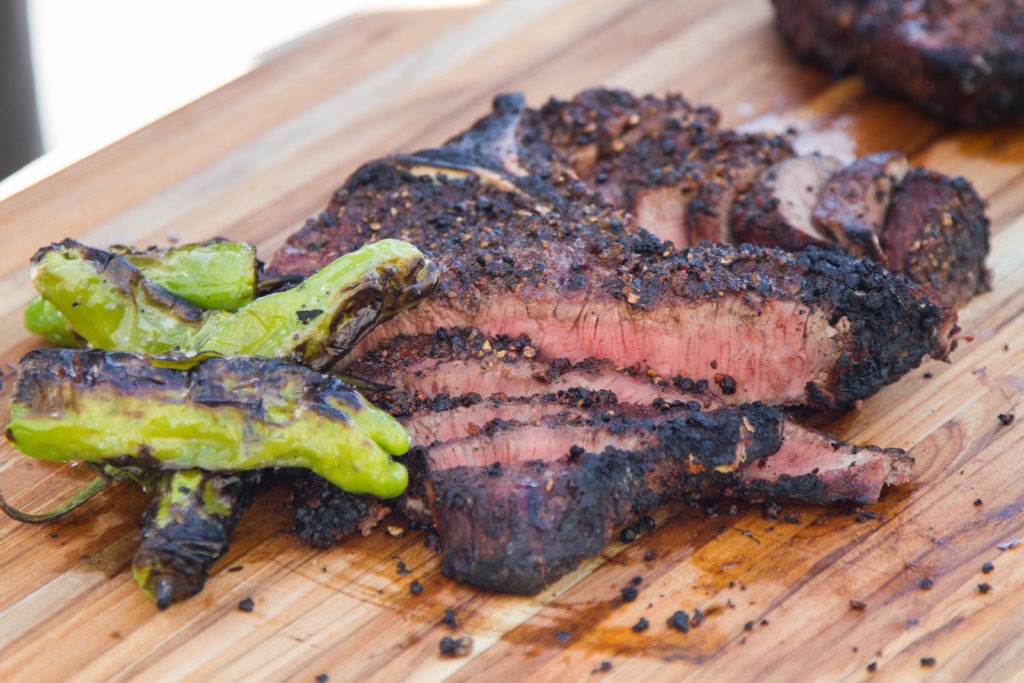
If you want to amp up the whole experience, throw some whole peppers that have been tossed with a little oil and salt into the coals. Turn them with tongs as they char, and remove them from heat when they are cooked all over. You can brush the charred skins off, or, if you use a thin-skinned variety like shishito peppers, just eat them as is.
Trivia
Caveman 101
Beyond ways of seasoning and preparing the meat for the coals, the success of this method is in the cooking.
The steps are simple, but you’ll have to follow them to the letter.
- Start a fire using hardwood lump charcoal or any hardwood.
- Wait for the coals to get red hot, then spread them into an even layer.
- Fan away the ash.
- Salt the steak and set it directly on the coals and let it cook for 3 minutes, then turn it on the other side for the same number of minutes. Check temp with Thermapen to 115 degrees for medium rare.
- Remove the steak from the fire and dust away any ash with a pastry brush.
- Add pepper and 1 knob of butter and leave to rest in a tight aluminum foil for 10 minutes, then enjoy!





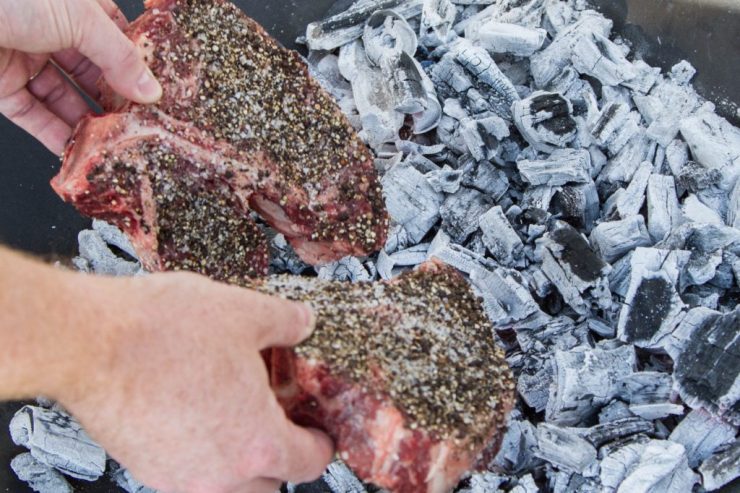


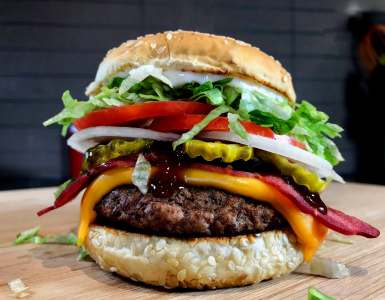
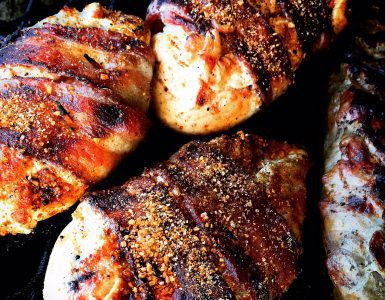
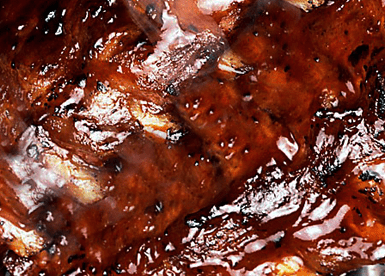


Add comment